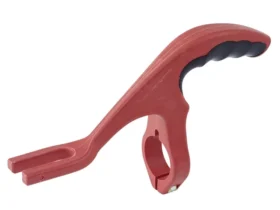Handheld vacuum sealers are incredibly convenient for preserving food, organizing small items, and even packing for trips. However, like any kitchen gadget, they require regular cleaning and maintenance to function efficiently and last longer. Neglecting proper care can lead to clogs, loss of suction, or even permanent damage.
Why Cleaning and Maintenance Matter
Before diving into the cleaning process, it’s important to understand why maintenance is crucial. A well-maintained vacuum sealer:
- Prevents bacterial growth – Food particles and moisture can accumulate, leading to mold or unpleasant odors.
- Ensures strong suction – Clogged filters or debris can weaken the vacuum power.
- Extends the device’s lifespan – Regular care prevents wear and tear on critical components.
- Improves sealing performance – A clean sealer ensures airtight seals every time.
Step-by-Step Cleaning Process
- Unplug and Cool Down the Device
Before cleaning, always unplug the vacuum sealer and let it cool down if it was recently used. This prevents accidental burns or electrical hazards.
- Wipe Down the Exterior
Use a slightly damp microfiber cloth to wipe the outer surface of the sealer. Avoid harsh chemicals or abrasive sponges, as they can scratch the plastic. For stubborn stains, a mild dish soap solution works well—just make sure no water seeps into the internal components.
- Clean the Vacuum Nozzle
The nozzle is where most debris gets trapped. Use a cotton swab dipped in rubbing alcohol to gently clean inside the opening. If there’s stuck-on residue, a soft-bristled toothbrush can help dislodge it without damaging the nozzle.
- Remove and Wash the Seal Bar
Some handheld sealers have a removable seal bar where food particles or plastic residue can stick. Check your user manual to see if yours is detachable. If it is, wipe it with a damp cloth and dry thoroughly before reattaching.
- Clean the Air Filter
A clogged filter reduces suction power. Most handheld vacuum sealers have a small foam or mesh filter near the nozzle. Remove it carefully and rinse it under warm water (if washable). Let it air-dry completely before reinserting. If your filter isn’t washable, gently tap it to remove dust or use compressed air.
- Check for Debris in the Battery Compartment
If your sealer runs on batteries, occasionally open the compartment and check for dust or corrosion. Use a dry cloth or a cotton swab to clean the contacts. If you notice corrosion, a small amount of vinegar on a swab can help neutralize it—just dry thoroughly afterward.
- Sanitize After Handling Raw Meat or Strong Odors
If you’ve sealed raw meat, fish, or pungent foods, sanitize the nozzle and seal bar with a food-safe disinfectant wipe or a vinegar-water solution. This prevents cross-contamination and lingering smells.
Maintenance Tips for Longevity
Cleaning is just one part of keeping your handheld vacuum sealer in good condition. Follow these maintenance practices to ensure it works efficiently for years:
- Store Properly When Not in Use
Keep your vacuum sealer in a dry, cool place away from direct sunlight. If it comes with a protective cover, use it to prevent dust buildup. Avoid storing it near heat sources, as excessive heat can warp plastic parts.
- Use the Right Bags
Not all vacuum-seal bags are the same. Using poor-quality or incompatible bags can lead to poor seals or even damage the heating element. Stick to bags recommended by the manufacturer for best results.
- Avoid Overfilling Bags
Overstuffed bags can cause liquids or food particles to get sucked into the nozzle, leading to clogs. Leave enough space for a proper seal, and pat dry moist foods before sealing.
- Regularly Inspect the Sealing Strip
The sealing strip can wear out over time. If you notice weak seals or uneven heating, check for debris or damage. Some models allow you to replace the strip—consult your manual for instructions.
- Don’t Overwork the Motor
Handheld vacuum sealers are designed for intermittent use. If you’re sealing multiple items in a row, give the device short breaks to prevent overheating.
- Keep the Battery in Good Condition
If your sealer is rechargeable, avoid letting the battery drain completely before recharging. For battery-operated models, remove the batteries if you won’t be using the device for a long time to prevent leakage.
Conclusion
A well-maintained handheld vacuum sealer can serve you reliably for years, saving you money on food waste and replacements. By following these cleaning and maintenance steps, regular wiping, deep cleaning, proper storage, and troubleshooting, you’ll ensure your device stays in peak condition.
Take a few minutes after each use to care for your vacuum sealer, and it will continue to preserve your food and belongings efficiently. If you encounter persistent issues, refer to your user manual or contact customer support for assistance.










Leave a Review